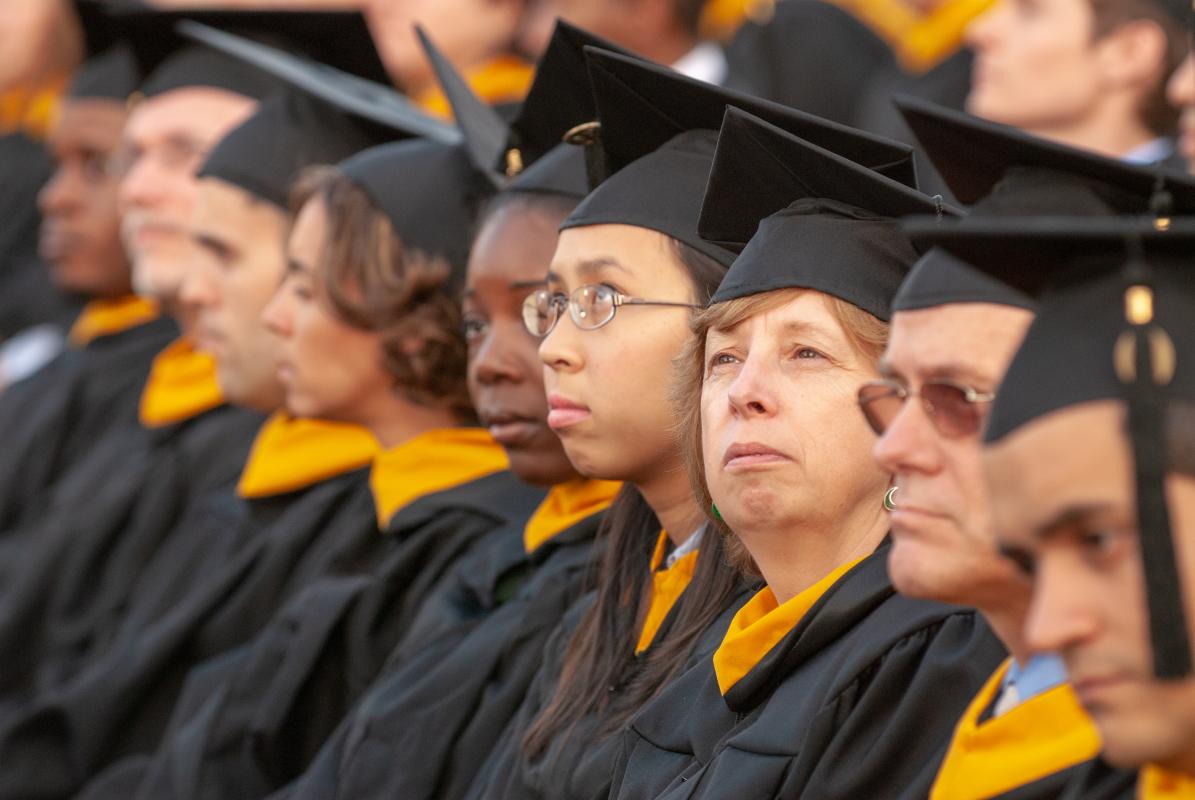
The United States loses out on hundreds of billions of dollars each year because of racial and socioeconomic inequities in higher education attainment, according to a new report by the Georgetown University Center on Education and the Workforce.
The report, conducted in partnership with the Postsecondary Value Commission, an initiative of the Bill & Melinda Gates Foundation and managed by the Institute for Higher Education Policy, found that it would take $3.97 trillion to close racial and socioeconomic gaps in college degree completion in the country. But after that initial investment, the United States would gain $956 billion per year in increased in tax revenues and GDP and cost savings on social assistance programs. (Inside Higher Ed received financial support from the Bill & Melinda Gates Foundation for coverage of the foundation's report on the value of higher education. Inside Higher Ed maintains editorial independence and full control over the content.)
“We really do make the case in this report that an investment in equity would be a really good investment that would pay off for society at large,” said co-author Kathryn Peltier Campbell, senior editor and writer at Georgetown CEW, who contributed an opinion piece on the subject to Inside Higher Ed today.
Among Americans with earnings in the top 60 percent, 57 percent have an associate degree or higher, compared to only 28 percent of earners in the bottom 40 percent, the report says. Only 21 percent of Latinx adults and 31 percent of Black adults have a postsecondary degree, compared to 46 percent of white adults.
The report examines what could happen if the bottom 40 percent of earners got college degrees at the same rate as the top 60 percent and if higher education attainment rates were the same across racial groups. According to the analysis, over half the population, 58 percent, would have a postsecondary degree in that scenario, including an additional 12.9 million low-income white Americans, 10.2 million Latinx Americans, 5.9 million Black Americans and 498,000 Asian Americans.
As a result, the United States would collect $308 billion more in tax revenue per year, the report suggested. People earning more would spend more and provide an estimated $542 billion annual boost to the country’s GDP. The authors also argue that, in addition to better wages, higher education correlates with lower incarceration rates and better health outcomes, leading to less annual spending on the criminal justice system (-$13.8 billion), public health benefits (-$58.7 billion) and public assistance programs, such as food stamps (-$33.7 billion).
Artem Gulish, co-author of the report and senior policy strategist at Georgetown CEW, said he recognizes the figures in the report are controversial because the numbers rest on a set of assumptions about what higher education can accomplish. The report also assumes there will be enough demand in the labor market for an upswing in college graduates.
“It’s a thought experiment,” Gulish said. “It’s not about the precise numbers. It’s more about the message that our country is missing out on substantial benefits because of the perpetuated inequalities we have in higher education and in K-12 and in the labor market." He called the report "optimistic" and said it was intended to be "inspirational."
The report acknowledges that higher education can only solve so much. For example, higher degree-attainment rates can’t rectify other challenges to more equitable wages, such as discriminatory pay gaps. This was a key takeaway of the report, said Stella Flores, associate professor of higher education at New York University and director of access and equity at the university’s higher education policy institute.
“Even if education was perfect, that on its own is not enough to significantly close the gap in racial equity because of issues of wealth, inheritance and the history of excluding various populations from ever garnering any wealth,” Flores said.
Nonetheless, the estimated billions in gains outlined in the report seemed realistic to Gary Hoover, professor of economics and executive director of the Murphy Institute, which focuses on social economics, ethics and public policy at Tulane University.
“OK, let’s take off a half a billion here, let’s put on a half a billion there, does it really matter?” said Hoover, who is also the founding and current editor of the Journal of Economics, Race and Policy. “It’s enough to where that’s a sizable sum that we’re leaving on the table. We as economists know it’s wasteful to leave money on the table, and this kind of inequality is doing precisely that.”
He said the function of such research is to convince higher earners that it's also in their interest to fix gaps in education attainment.
“Here’s what I think people at the top of the income distribution fear: they fear that if you help people at the bottom, then my share of the pie will be smaller,” he said. “But what they fail to realize is, what if the pie is actually bigger? A smaller slice of a bigger pie might actually make you better off than a bigger slice of a smaller pie.”
Hoover worries, however, that no amount of research on economic inequality has yet created the political will for such a sizable and long-term investment from lawmakers. The CEW report estimates that it would take not only trillions of dollars but at least 34 years to close attainment gaps in higher education and then at least another 17 years for the cumulative gains to outpace the initial costs.
Gulish said the fact that the analysis is a “long-term forecast” shouldn’t discourage smaller, more immediate policy changes to address mounting student debt, the high cost of college, disparate funding for community colleges and other obstacles to degree completion for underrepresented students.
“The idea is not that we will instantaneously solve inequality,” he said. “It should be an impetus to get started on all the changes and all the work that will be necessary to get there.”
from Inside Higher Ed | News https://ift.tt/3eEFkLJ


No comments:
Post a Comment